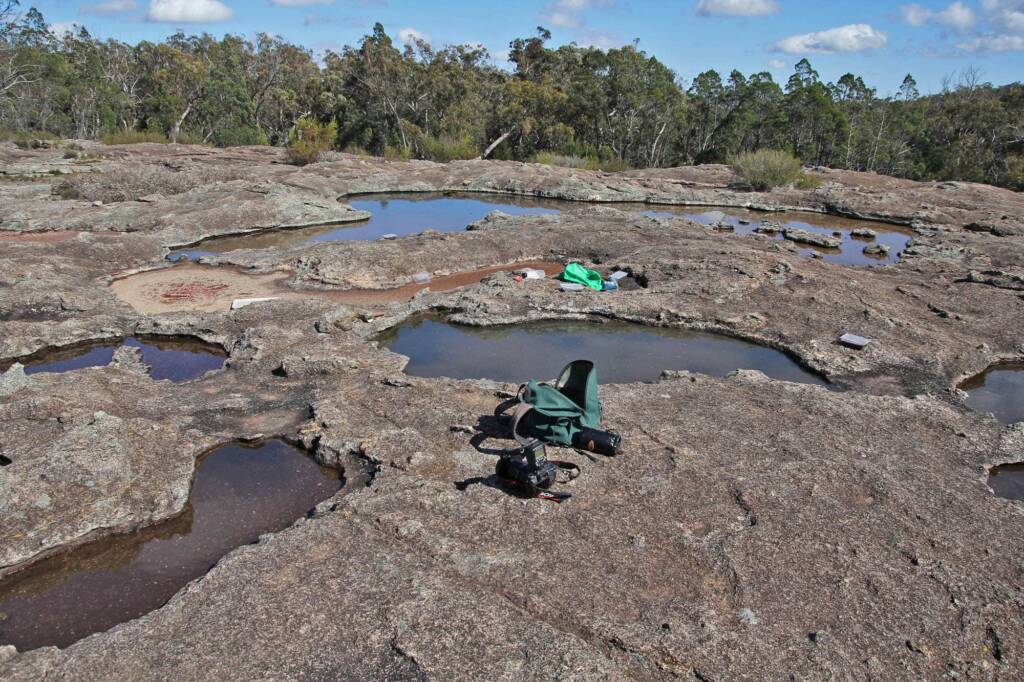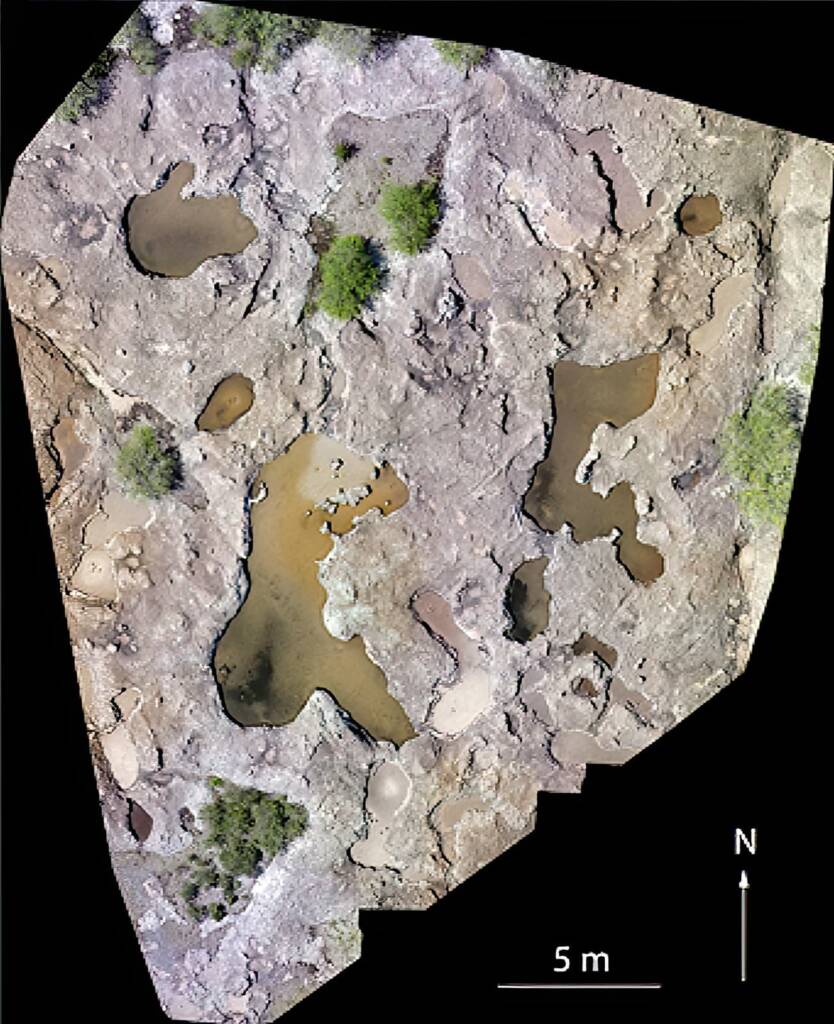Author Marc Newman ◦
Part 1 – Gnammas in the Granite Belt, Queensland
Gnammas are rock pools found mostly on relatively level outcrops of granite, but also on other types of rocks. It is an Aboriginal name from Western Australia and appears to be an accepted term in the scientific community, world wide, although there are a number of other names (such as panhole or rock holes) by which they are known. They can be large or small, deep or shallow and may contain a variety of wildlife.
My interest is in what are called ‘Pan Gnammas’ — a flat bottom relatively shallow one that fills with water after rain, but has sufficient volume for various wildlife species to go through a breeding cycle before the pool dries up. I don’t have a satisfactory explanation for how they get to be flat bottomed and shallow with undercut edges. The following is a possible explanation but not certain…
| Rock breakdown by repeated wetting and drying involves the development of internal rock stresses as a result of progressive formation of ‘ordered water‘ — an individual water molecule which has become fixed into place or has become arranged in a certain position by virtue of its tendency to form hydrogen bonds — layers which exert forces against confining walls or void boundaries. As the positively charged ends of water molecules are attracted to the negatively charged surfaces of clay minerals and colloids they form a layer of oriented water particles. With each wetting event a new layer of ‘ordered water‘ is added to clay particles which remain during the drying phase. Failure appears to be most pronounced during the drying phase when negative pore-water pressure is greatest and tensile failure occurs. |

I was fortunate to meet Dr Carol Booth through Flickr where some of my photos were used by Wildlife Magazine Australia of which Carol was editor at that time. Carol’s property is part of a wildlife nature refuge at Greenlands about 10 km West of Stanthorpe and contains a few Gnammas on a rocky granite outcrop near the entrance to the property. The following is a drone’s eye view of Carol’s Gnammas.

Gnammas in the Granite Belt > Life in the Gnammas | Clam shrimps in the Gnammas
Footnote & References
- Marc Newman, Guest Author, Ausemade & Flickr
- The ecology of gnammas (weathering pits) on the Stanthorpe Plateau, Northern New England Tablelands, with special reference to the Clam Shrimp Paralimnadia urukhai (WEBB & BELL) (CRUSTACEA: BRANCHIOPODA: SPINICAUDATA), Timms, B.V., Booth, C.J., Newman, M. & McCann, J.A., https://www.royalsocietyqld.org/wp-content/uploads/2019/12/Timms_Web.pdf
Check out more blogs and contribution by Marc Newman.
